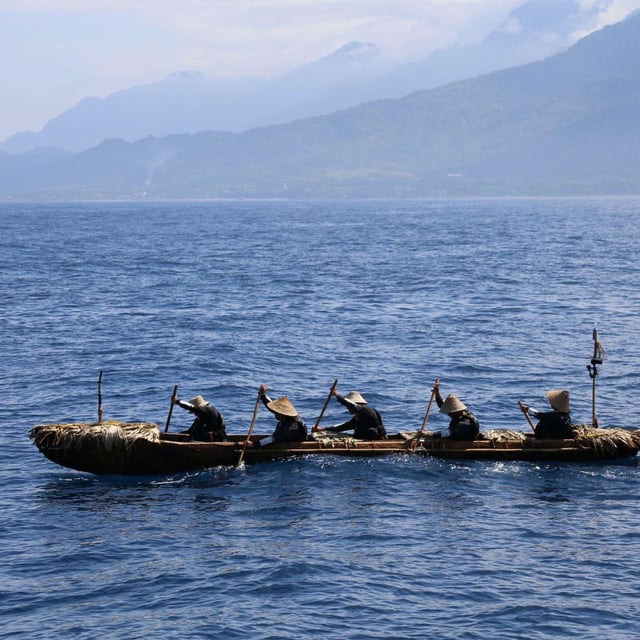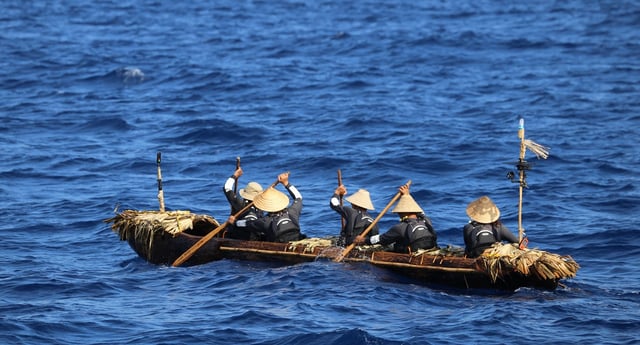Overview
- A team led by Yōsuke Kaifu at the University of Tokyo built a 7.5-meter, 241-kilogram dugout canoe named Sugime using replicated Paleolithic stone tools.
- In July 2019, five paddlers without GPS or compass completed the 45-hour, 225-kilometer journey to Yonaguni Island, overcoming exhaustion, water ingress and heat.
- Early simulations indicated that rafts were too slow and fragile for the Kuroshio’s fast flow, leading researchers to adopt a timber canoe design.
- Computational models showed ancient seafarers would have needed to aim well south of their target to counteract the current and land near the Ryukyu archipelago.
- While the crossing confirms one-way Paleolithic migration from Taiwan to the Ryukyus was feasible, researchers say a return trip would have required detailed maps and current knowledge.


